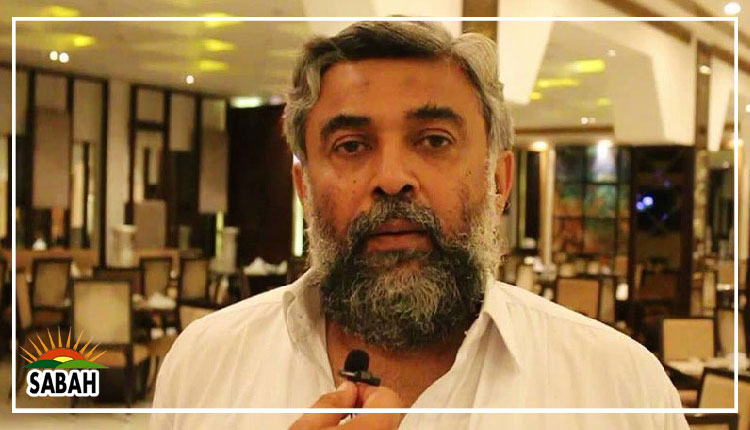Chips in the brain…Rafia Zakaria
NOLAND Arbaugh, 29, was a student and athlete at the Texas A&M University when he was paralysed during a diving accident eight years ago. Arbaugh had at the time been working at a childrens summer camp. Since being paralysed he has not been able to do many of the things he used to do. He has no sensation of anything at all below his shoulders.
This changed recently when Arbaugh received a brain chip implant from Neuralink, a company owned by Elon Musk. Started in 2016, the company had been working on creating a brain chip that would allow paralysed patients to accomplish tasks simply by focusing their brain waves on them. Last week, in a livestream, Neuralink showed Noland Arbaugh playing chess simply by using his brain waves.
In an interview, Arbaugh said that the technology had already changed his life because he was able to play one of his favourite games Civilisation VI that he had been unable to play since he became paralysed. The brain chip had been implanted in Arbaugh in an operation he described as simple enough to be discharged from the hospital after only a day. As soon as he could, he played Civilisation VI for eight hours straight. All this only using his brain waves.
The brain chip technology implanted in Arbaughs skull truly seems miraculous. The idea that human beings can do tasks simply using their brain waves seems something out of science fiction. But, while Neuralink rushed to show the world what the chip can do, it is not the first nor the only company to pioneer the use of neurotechnology to enable paralysed patients to do things.
Last year, a company called Synchron also announced that it was ramping up production of its brain-computer interface that allows paralysed patients to do things on a computer using brain waves. The Synchron technology allows paralysed patients to use their mind to operate cursors and smart home devices.
The difference is that the Synchron device, whose technology has already gone into production for commercial use, is not implanted in the skull like in Neuralinks case. Instead Synchron uses a stent like device that is implanted through a patients bloodstream and then allows the patient to use their mind to control smart technology.
The virtual world and what we do in it is increasingly turning out to be more vital than what we may be doing in real life.
A few months ago, Synchron announced that it was already in the process of manufacturing its technology for commercial use so that millions of patients around the world who are completely paralysed could begin to use this life-altering innovation.
While Synchron and Neuralink appear to be the industry leaders, it is reported that there are several other companies that are working on some aspect of this technology as well.
One issue that has come up in the production of this technology surrounds the animal trials that have already taken place in order to produce it and the kind of human trials that will be conducted prior to the technology being safely available on the market. According to the head of neural engineering at the National Institute of Health in the United States, the Neuralink technology is not a breakthrough and that it is still in the very early days post-implantation, and there is a lot of learning on both the Neuralink side and the subjects side to maximise the amount of information for control that can be achieved.
A Reuters report from the end of February reported the regulatory FDA had found problems with record keeping and quality controls for animal experiments at Elon Musks Neuralink, less than a month after the start-up said it was cleared to test its brain implants in humans.
In December, Reuters reported that employees there had complained that animal testing was being rushed through, which was causing needless death and suffering among the animals (sheep, monkeys and pigs) used in the experiments. At the heart of the controversy was the allegedly rushed process that was causing botch-ups and the needless deaths and suffering of animals.
Clearly, as these technologies are developed, there will be many ethical concerns about how the advances in neuromedical technology will be achieved. There is no doubt that most companies that are trying to get this technology into production first or are manufacturing it for desperate people will involve complex issues. Naturally, a question that follows is how people, such as Noland Arbaugh, who are one of the first to receive the technology will fare in the long term. It is not really known what would happen if neurotechnology (regardless of which company produces it) misfires and the technology that is meant to improve the lives of paralysed patients ends up complicating their lives.
There was a time not long ago when people assumed that the virtual world was a lesser version of our real world. Even now, people are fond of rants which denounce technology, emphasising the harm it has caused to children, our attention spans, and our cognitive and physical abilities. What we need to recognise is that the virtual world and what we do in it is increasingly turning out to be more vital than what we may be doing in real life.
Development of cutting-edge technology such as this reveals that we are on the cusp of transformations in which the nature of reality and unreality and our ability to manipulate it will be changed forever.
In this sense, when we think of brain chips implanted in our skulls, or of stents in our blood vessels, we need to pause not over the details of this particular development but rather that something that was once utterly unimaginable is now on the verge of being realised in a way that will change our world forever.
Courtesy Dawn












